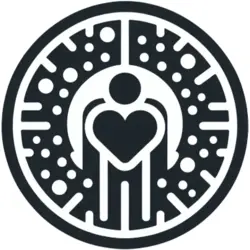Introduction to the Dating Process
Dating is a complex journey that many individuals embark upon in their pursuit of love and companionship. Recognizing dating as a structured process is essential, as it typically unfolds over a series of stages, each playing a pivotal role in the development of a relationship. While the experience of dating may vary significantly from person to person, the overarching principles remain consistent, providing a useful framework for those navigating this intricate path.
The significance of understanding the stages in dating cannot be overstated. Each phase offers unique challenges and opportunities that contribute to the overall experience of building a healthy relationship. For instance, the initial stages often involve exploration and discovery, where individuals learn about one another’s interests, values, and compatibility. In contrast, later stages focus on deepening emotional connections and addressing any underlying issues that may impact the relationship’s dynamics.
Stage 1: The Initial Attraction
The journey to love often begins with the pivotal stage of initial attraction, where two individuals first sense a magnetic pull towards one another. This phase is characterized not only by physical appearance but also by an array of other factors that contribute significantly to the budding interest. Physical attraction can encompass various attributes, including facial features, body language, and overall demeanor, which initially draw people together. However, attraction is far more nuanced and involves chemistry—an almost tangible sensation that sparks curiosity and interest.
A key element in the development of initial attraction is the presence of shared interests or values. When individuals meet in environments that foster commonalities, such as social circles, workspaces, or during communal activities, the likelihood of developing an immediate connection increases. In today’s digital age, dating apps and online platforms have emerged as prominent venues for meeting potential partners, broadening the landscape for attraction. These platforms allow users to filter matches based on interests, lifestyles, and even personality traits, optimizing the chances of an engaging first encounter.
First impressions play a crucial role during this stage, often setting the tone for subsequent interactions. A warm smile, engaging conversation, or even eye contact can create a lasting impact, influencing how one perceives the other. It is essential for individuals to be mindful of their presentation and behavior during initial encounters, as these factors can significantly affect attraction. Understanding the dynamics of attraction can provide valuable insights for navigating this exciting period, helping individuals cultivate potential relationships with genuine foundations that may lead to deeper connections in the future.
Stage 2: Getting to Know Each Other
The second stage of dating, often referred to as “getting to know each other,” is a pivotal point in the journey towards establishing a meaningful relationship. During this stage, individuals take the time to uncover each other’s personalities, values, and lifestyles. This phase is characterized by open dialogues, where effective communication plays a crucial role. It involves a combination of asking the right questions and engaging in active listening, which enables both partners to understand one another on a deeper level.
Effective communication can facilitate the growth of intimacy and trust. As partners share their beliefs, interests, and life experiences, they create a foundation upon which a potential relationship can thrive. However, it is important that both individuals approach this stage with sincerity and a willingness to be vulnerable. Vulnerability often leads to deeper connections, as it encourages individuals to reveal their true selves without the fear of judgment.
It is essential to recognize that challenges may arise during this stage. Mismatched expectations can lead to misunderstandings and frustration; for instance, one partner may be inclined to move faster than the other. Addressing these discrepancies promptly and honestly is vital to avoiding further complications, as ignoring them can hinder emotional growth and lead to disconnection.
Moreover, different communication styles and personal backgrounds can result in conflict. Navigating these differences requires patience and a commitment to understanding each other’s perspectives. Engaging in open discussions about expectations, boundaries, and emotional needs can pave the way for a stronger partnership.
Overall, the getting to know each other stage is essential for laying the groundwork for a lasting connection. By fostering effective communication and embracing vulnerability, partners can strengthen their bond and enhance their journey towards love.
Stage 3: Establishing a Relationship
In the journey of dating, the third stage is critical as it signifies the moment couples decide to transition from casual dating to a committed relationship. This stage is characterized by a series of indicators that affirm both individuals’ intentions to deepen their connection. One of the most significant signs is the establishment of mutual feelings; when both partners recognize and acknowledge their affection for one another, it creates a foundation for commitment.
Trust plays an essential role in this phase. As partners begin to share their personal experiences, fears, and aspirations, they create a safe space for vulnerability. The ability to confide in each other fosters a sense of security, allowing both partners to feel supported as they navigate the complexities of a deeper relationship. Furthermore, the alignment of shared goals is another important aspect. Partners who are on the same page concerning their future visions—whether regarding career aspirations, lifestyle choices, or family planning—are more likely to build a successful relationship together.
When establishing a relationship, it is crucial to set clear boundaries and expectations. Discussing topics such as communication styles, personal space, and social interactions can prevent misunderstandings that may arise later on. This practice not only reinforces mutual respect but also empowers both partners to voice their needs and concerns, ensuring that the relationship develops in a healthy manner. Additionally, emotional adjustments are inevitable as couples move forward together. Both partners must recognize that their dynamics will evolve and adapt to accommodate one another’s growth.
As couples enter this pivotal stage, they lay the groundwork for enduring partnerships. Recognizing and addressing these elements will ultimately bolster the ability to sustain love and connection as they journey toward a fulfilling relationship.

